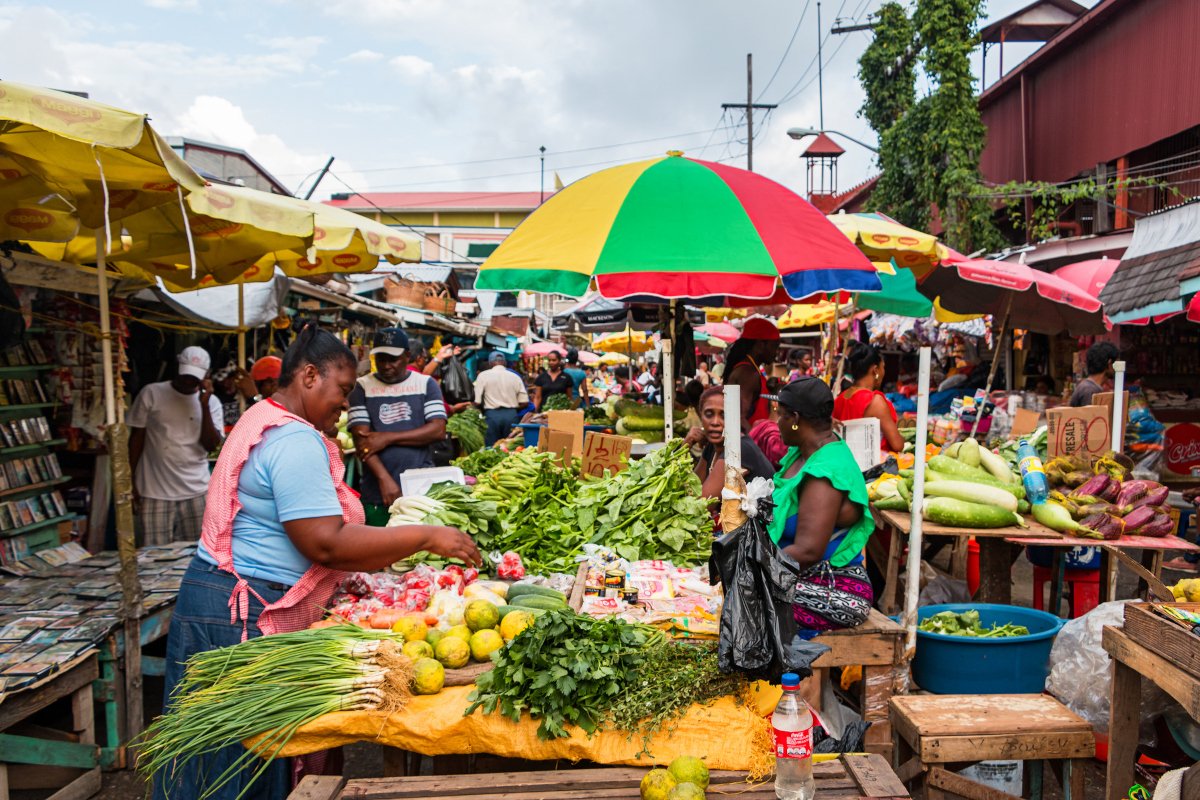Close

In Region 3 (Essequibo Islands–West Demerara), the rehabilitation of key public markets has marked a major stride in enhancing commercial activity and improving the working conditions of hundreds of vendors. The modernization of the Leonora and Parika markets has directly benefited over 800 market vendors, while significantly improving the shopping experience for surrounding communities. These upgrades reflect the government’s commitment to inclusive economic growth and support for small-scale commerce.
The Leonora Market, a longstanding trading post on the West Coast, now features upgraded roofing, improved drainage systems, reorganized vendor stalls, and enhanced sanitation facilities. These improvements provide a safer and more hygienic environment for both vendors and consumers. At Parika—a key trade and transportation hub linking coastal and riverine communities—similar enhancements have been made. These include more durable infrastructure, increased vendor space, and greater flood resilience, making the market more accessible and reliable throughout the year (Ministry of Local Government and Regional Development, 2023).
These infrastructural developments are not just about physical improvements. They represent a deeper investment in the livelihoods of daily earners who depend on market trade. With better facilities, vendors are now able to conduct their businesses more efficiently, while customers benefit from a more organized and cleaner environment. Reports indicate that foot traffic and overall market activity have increased since the rehabilitation works were completed, contributing to economic vitality in the region (Department of Public Information, 2023).
The government’s market improvement strategy has been guided by community consultations and the active involvement of local stakeholders, ensuring that the rehabilitations reflect the needs and expectations of those who use the facilities most. This participatory approach has contributed to the successful implementation of the project and its wide acceptance among vendors and shoppers alike.
These efforts are part of a larger push to uplift regional economies and support small businesses across Guyana. Modernizing public markets plays a critical role in that mission, providing entrepreneurs with the infrastructure they need to operate safely and productively. Beyond bricks and mortar, these projects represent dignity, stability, and opportunity for vendors who are vital to the social and economic fabric of their communities.
This is not just about rehabilitated spaces—it is about empowering local economies and preserving livelihoods. This is what real progress looks like.

The Guyana Project is an independent media platform delivering fact-checked, ground-level reporting on politics, economy, and public life in Guyana. With a focus on transparency and development, we bring unfiltered news and thoughtful analysis to help shape a more informed, forward-looking nation.

Upgraded Markets in Region 3 Strengthen Local Economies and Support Vendors

Lorem Ipsum is simply dummy text of the printing and typesetting industry. Lorem Ipsum has been the industry’s standard dummy text ever since the 1500s, when an unknown printer took a galley of type and scrambled it to make a type specimen book. It has survived not only five centuries, but also the leap into electronic typesetting, remaining essentially unchanged. It was popularised in the 1960s with the release of Letraset sheets containing Lorem Ipsum passages, and more recently with desktop publishing software like Aldus PageMaker including versions of Lorem Ipsum.
t is a long established fact that a reader will be distracted by the readable content of a page when looking at its layout. The point of using Lorem Ipsum is that it has a more-or-less normal distribution of letters, as opposed to using ‘Content here, content here’, making it look like readable English. Many desktop publishing packages and web page editors now use Lorem Ipsum as their default model text, and a search for ‘lorem ipsum’ will uncover many web sites still in their infancy. Various versions have evolved over the years, sometimes by accident, sometimes on purpose (injected humour and the like).
Contrary to popular belief, Lorem Ipsum is not simply random text. It has roots in a piece of classical Latin literature from 45 BC, making it over 2000 years old. Richard McClintock, a Latin professor at Hampden-Sydney College in Virginia, looked up one of the more obscure Latin words, consectetur, from a Lorem Ipsum passage, and going through the cites of the word in classical literature, discovered the undoubtable source. Lorem Ipsum comes from sections 1.10.32 and 1.10.33 of “de Finibus Bonorum et Malorum” (The Extremes of Good and Evil) by Cicero, written in 45 BC. This book is a treatise on the theory of ethics, very popular during the Renaissance. The first line of Lorem Ipsum, “Lorem ipsum dolor sit amet..”, comes from a line in section 1.10.32.